Key takeaways:
- Sustainability in exhibitions encompasses mindful sourcing, reuse of materials, and community engagement to foster environmental awareness.
- Effective communication of sustainable practices enhances audience engagement and inspires deeper understanding of eco-friendly choices.
- Challenges include finding visually appealing eco-friendly materials, financial constraints, and the need for education about sustainability among artists and audiences.
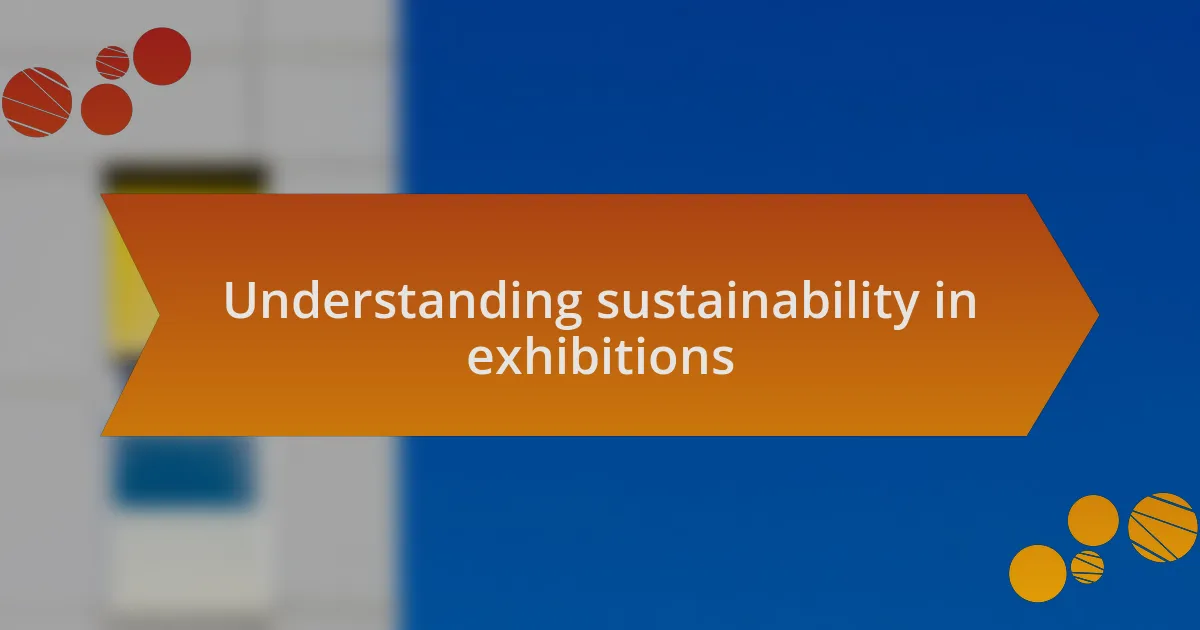
Understanding sustainability in exhibitions
Sustainability in exhibitions is about more than just using eco-friendly materials; it’s a mindset that permeates every aspect of the event. I recall attending a gallery opening where the organizers not only sourced local artists but also repurposed existing installations. It made me wonder: how often do we consider the stories behind the materials we choose?
Engaging with sustainable practices means understanding the life cycle of the components involved in an exhibition. For instance, when setting up my own display, I made a conscious effort to opt for reusable structures instead of single-use items. The moment I stepped back to see the final look, I felt a sense of pride, knowing my choices would leave a minimal footprint.
In my experience, sustainability also involves creating a dialogue with the audience. How can we raise awareness? I’ve noticed that exhibitions that include educational elements about their sustainable choices resonate more. It’s not just about showcasing art; it’s about fostering a community that values and understands the impact of our decisions.
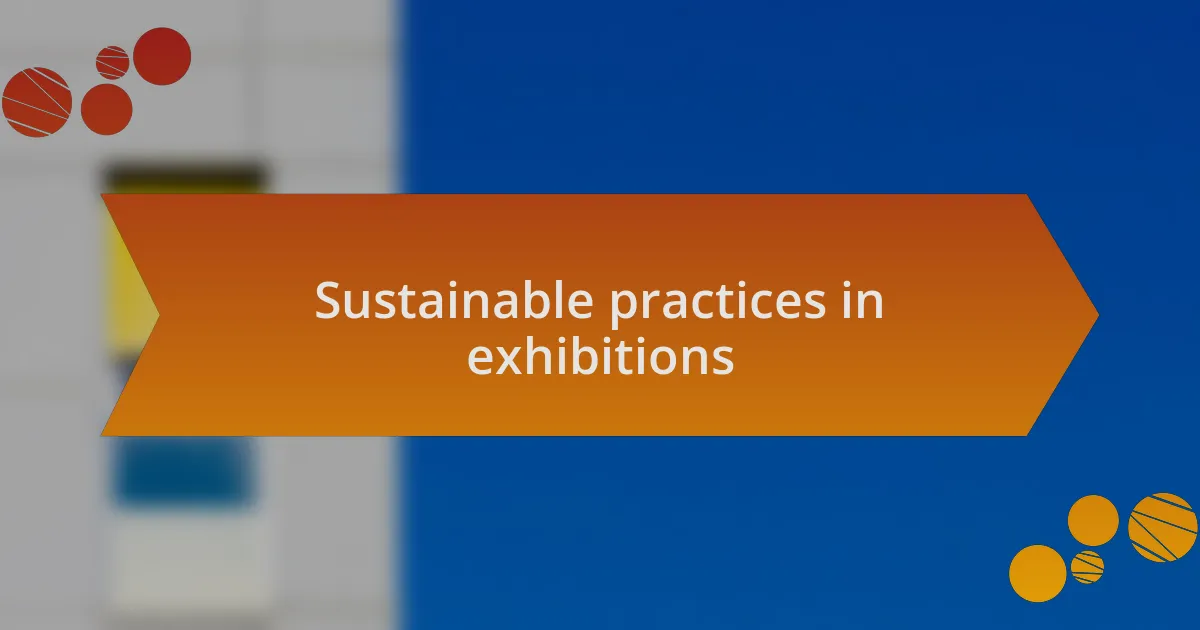
Sustainable practices in exhibitions
Sustainable practices in exhibitions start with mindful sourcing, which not only conserves resources but also supports local economies. I remember collaborating with an artist who insisted on using recycled materials for her installations. Watching her transform what many would discard into something beautiful made me think: how often do we overlook the creative potential in waste?
Lighting plays a crucial role in sustainability as well. During my last exhibition, I opted for LED lighting, which not only reduced energy consumption but also enhanced the artworks’ vibrancy. It was fascinating how a small choice could lead to a big impact—not just on the environment but on the audience’s experience.
I’ve realized that the way we communicate our sustainable efforts matters just as much as the efforts themselves. For example, I introduced interactive panels that detailed our sustainability journey, sparking conversations among visitors. Isn’t it rewarding to see how engaged people become when we share our commitment to sustainability?
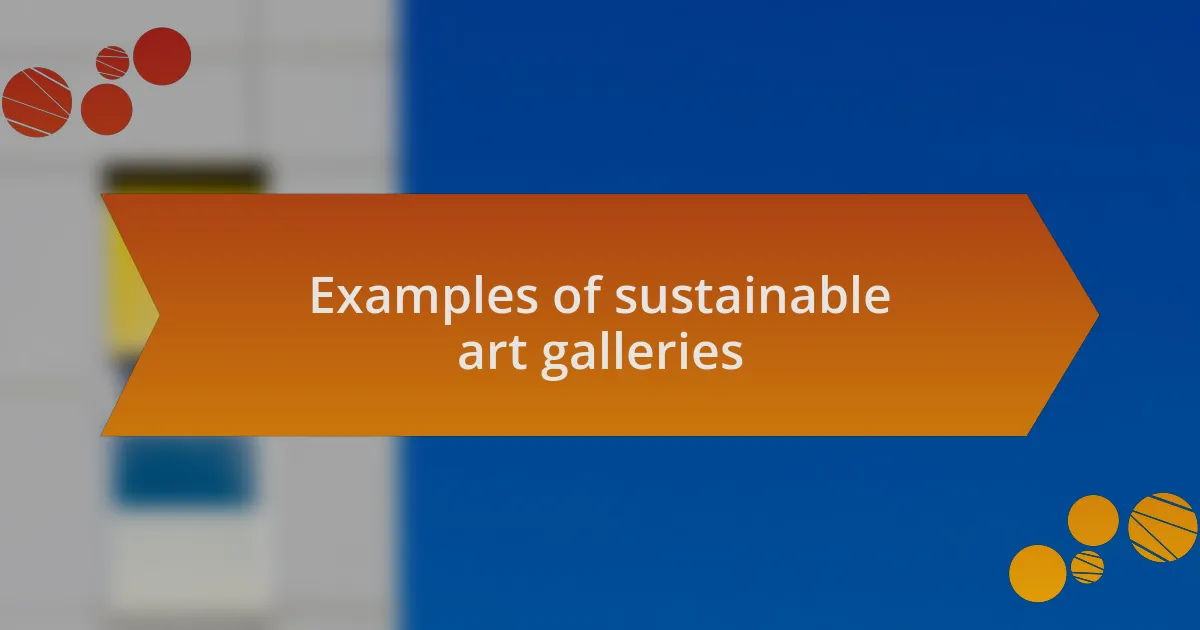
Examples of sustainable art galleries
One standout example of a sustainable art gallery is the Kettle’s Yard in Cambridge, UK. During a visit, I was struck by their commitment to integrating nature into the aesthetic and functional elements of their space. They utilize renewable materials in their renovations, and I couldn’t help but think about the calm atmosphere created by such intentional choices; it really shows how sustainable design can enhance our experience of art.
Another inspiring instance is the National Gallery of Australia, which has implemented a comprehensive sustainability strategy that includes solar energy and water conservation practices. Attending an exhibition there recently, I admired how their initiatives not only reduce environmental impact but also set a precedent for other galleries. Have you ever considered how such efforts ripple out, inspiring both artists and patrons alike to think more sustainably?
Lastly, the Oslo-based Astrup Fearnley Museum stands out for its innovative approach to sustainability. While exploring their exhibitions, I learned that they engage local communities by hosting workshops focused on environmental awareness. It was heartwarming to see the artists openly share their processes and thoughts on eco-friendly practices, which sparked valuable discussions among attendees. Isn’t it amazing how art can be a catalyst for change on such pressing issues?
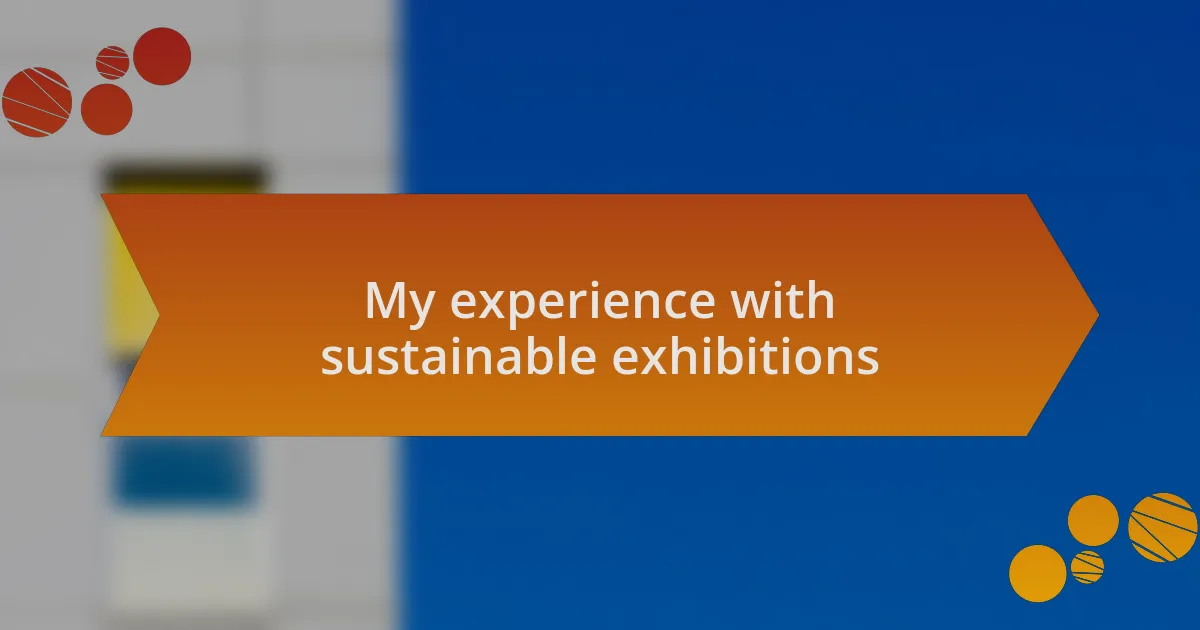
My experience with sustainable exhibitions
When I first encountered a sustainable exhibition at a local gallery, I was genuinely amazed by how the space transformed through eco-friendly choices. It wasn’t just the artwork that captivated me; the use of repurposed materials in the display installations added a layer of depth to the experience. I remember standing next to an artwork made from recycled objects and contemplating how every piece told a story of renewal.
At another event, I watched as the curators engaged with visitors about their sustainability practices. They shared stories about sourcing local materials and collaborating with environmentally-conscious artists. That sense of community really struck a chord with me. It made me wonder—how often do we consider the origins of the art we admire?
During a recent visit to a sustainable exhibition, I was deeply moved by a piece that incorporated natural elements, like living plants and sustainable fabrics. It resonated with me on a personal level, as I often seek beauty in nature myself. Seeing this integration in an artistic context made me reflect on the delicate balance between creativity and environmental responsibility. How can we all make choices that honor both our artistic expression and our planet?
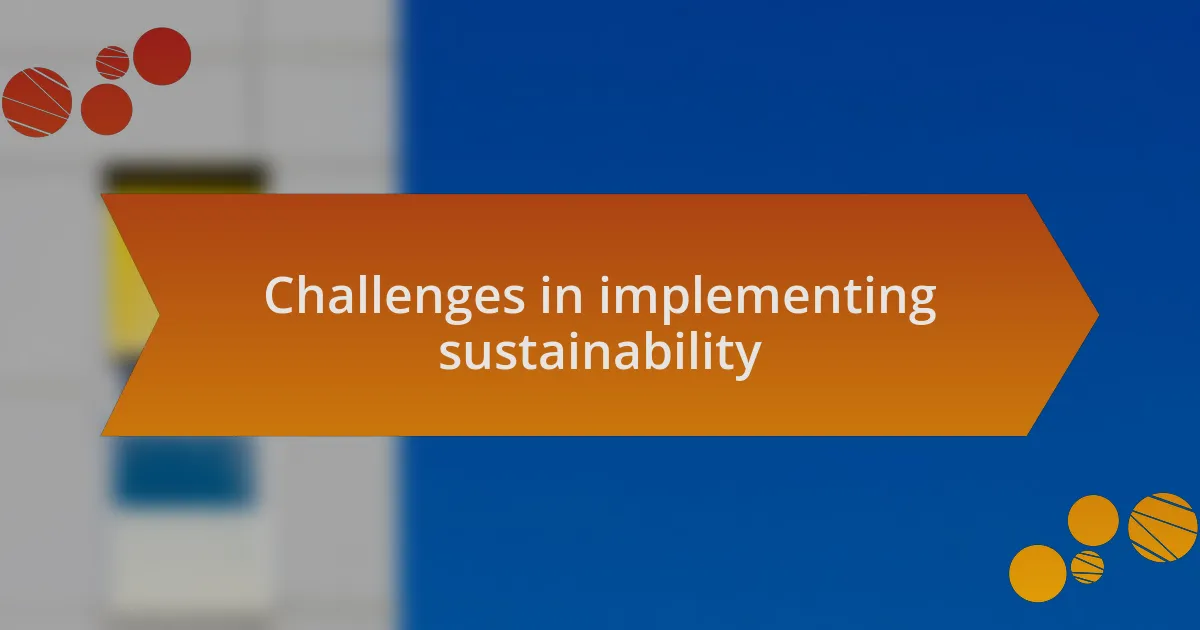
Challenges in implementing sustainability
When it comes to implementing sustainability in exhibitions, one major challenge is sourcing materials that are both eco-friendly and visually appealing. I remember a specific project where the curators struggled to find biodegradable display options that wouldn’t compromise the aesthetic of the artwork. Isn’t it interesting how often we prioritize appearance over environmental impact, even when the latter could enhance the narrative of the piece?
Financial constraints also play a significant role in the move towards sustainability. While I have seen galleries eager to embrace eco-friendly practices, the initial investment can be daunting. It raises an important question: how do we justify the costs for the long-term benefits of sustainability when budgets are already tight?
Lastly, educating both artists and audiences about sustainable practices can feel like an uphill battle. I once attended an exhibition where the organizers tried to engage the public through interactive displays about sustainability, but the message seemed lost on many attendees. How can we inspire a deeper understanding of sustainability that resonates beyond a single exhibition? This is the ongoing challenge we face in bridging art, community, and environmental awareness.